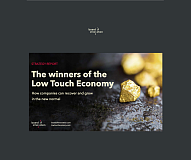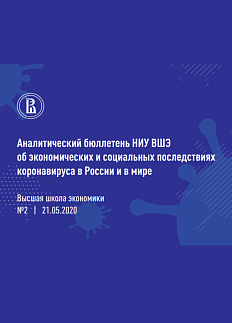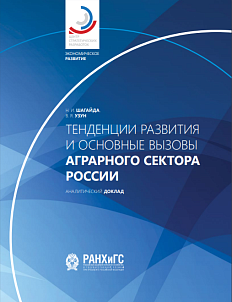The study, prepared by analysts from the Board of innovation consulting group, reflects the characteristic features of the current situation, which have become a new normality phenomenon in context of social distancing and increased requirements for the safety and health of people, which, in turn, are reflected in functioning and development prospects of specific industries and companies. The authors of this study identified key factors contributing to business development in changing realities, and also gave examples of specific market players who have implemented a successful business strategy in current economic situation.
The previous report within the framework of this study, "Economic growth in context of interaction decrease",touches on issues of social distancing, changes in consumer behavior and differentiated nature of damage in context of the economic crisis.
Roscongress Foundation analysts highlighted the main theses of this research, accompanying each of them with suitable fragments of video broadcasts of panel discussions held as part of business programs of the key events hosted by the Foundation.
New realities brought about in order to keep social distance are becoming common in today’s reality.
The new realities, characterized by low interaction, have affected various aspects of social relations. So, production processes and areas have been rebuilt taking into account a distance between workers; robots have replaced humans in industries with high interaction between people; relatives of the most vulnerable family members communicate with each other through glass; concerts and entertainment events are transferring to online.
According to the authors, the most likely scenario for the current situation development provides for the further preservation of social distancing measures and economic incentives aimed at reducing the damage caused. According to experts, this situation will continue over the next one year and a half.
The crisis of traditional communication channels and certain industries is a trigger for virtual instruments and alternative products development.
In a previous report, the authors of this study emphasized that e-commerce companies in current context are in the most advantageous position, characterized by increased demand. In this regard, their ability to provide an adequate supply of their goods and services plays a critical role in activities of companies in this sector.
High-demand goods and services include, first of all, platforms for remote communication, applications for doing sports at home, food delivery, and various tools to support e-commerce.
Crisis and disruptions to functioning supply chains have also been a factor in development of industries that act as alternative links in damaged value chains. Thus, in context of the crisis and disruption in the USA meat industry, as well as growing public intolerance of animal abuse, Beyond Meat, the producer of vegetable meat is a competitive alternative for consumers.
Sectoral shifts, changes in consumer behavior and social relations caused by the economic crisis and the coronavirus pandemic are key factors for the further development of certain sectors.
The changed conditions are determined by six key circumstances that are factors for companies growth in the new realities. These factors include industry shifts, regulatory changes, changes in consumer behavior, modified social relations, new technologies and, finally, access to new resources.
At the same time, the greatest degree of relevance are, first of all, such factors as industry shifts, changes in consumer behavior and social relations. Thus, a large degree of production areas distribution, remote operation and the use of modern digital tools in general is a driver for efficient production centers functioning in changed conditions, and the transition of consumers to alternative products and the use of various applications for work, communication and entertainment from home is a trigger for development of new tools and products.
See other materials posted in special sections of the Roscongress Information and Analytical System COVID-19, SMEs, Entrepreneurship and StayHomeEconomy dedicated to possible ways to stabilize the economy in a pandemic, as well as health development issues as the strategic goal to ensure economic and national security.






